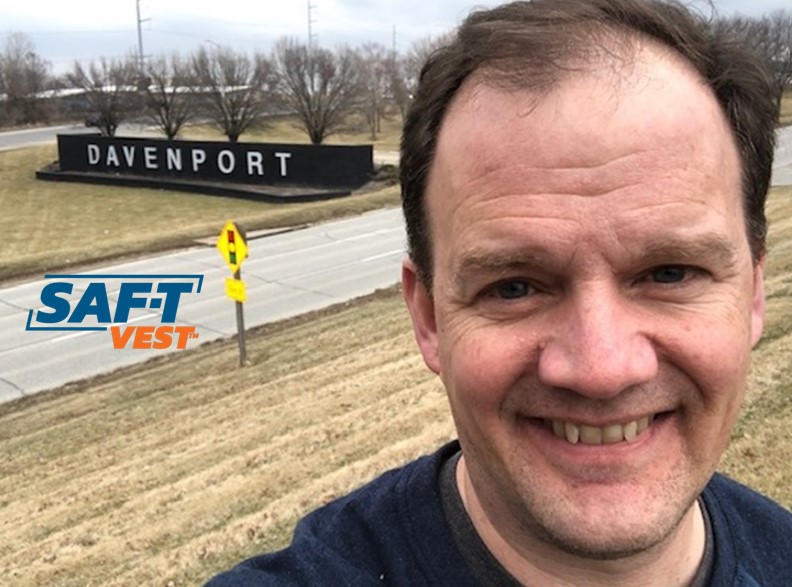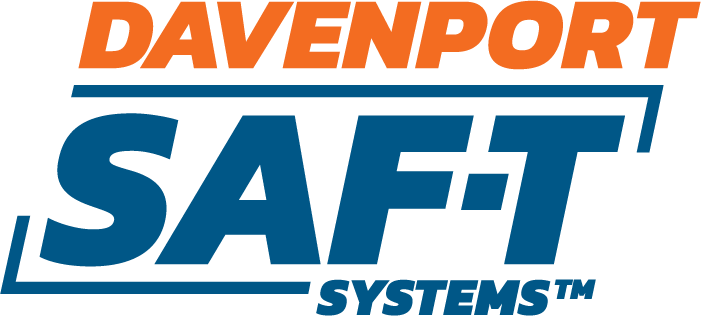Tim Schuster, founder of Pop-Up Think Tank, interviewed Ryan Davenport, Co-Founder and CEO of Davenport SAF-T Systems, in November. The company is developing innovative wearable tech designed by Ryan’s father to reduce injuries from falls among older adults
How did this SAF-T VEST idea get started? Was there a key moment or conversation?
In 2014, Dad showed me sketches and blueprints he’d created of a wearable fall protection system. He was 80. He was thinking about how to solve the problem of falling injuries, and he was also thinking about his own life. He and Mom lived in their own home on 40 acres of wooded land. Both were healthy. Dad knew a bad fall could jeopardize the life they’d built together. If anybody knew about falling injuries, he did. In his 30+ years as an orthopaedic surgeon, Dad took care of countless older adults who fell and suffered terrible, life-threatening injuries. Simply trying not to fall wasn’t enough.
We started working on the SAF-T VEST because fall prevention hasn’t stopped people from falling. Of course, we should still do everything we can to reduce our risk of falling. Similarly, when we drive a car, we do everything we can to reduce our risk of a crash. But even the safest drivers use seatbelts and airbags.
The SAF-T VEST is fall injury protection. It will detect a fall in progress. A system of airbags will inflate in less than half a second. As the airbags deflate, they absorb the impact of the fall. The SAF-T VEST will form a cocoon around the user, protecting the hips, wrists, elbows and shoulders. The head, neck and back will also be protected. It won’t matter which direction the user falls.
How much progress have you made with the SAF-T VEST?
We want to be further along, but we’re proud of what we’ve done so far. Certainly, obtaining a U.S. patent for the SAF-T VEST was big. It’s one of those things everybody asks you about—sort of a “check the box” thing. Patents take a long time. I knew we needed it if we were going to take the next step. Months went by. Years. I developed an annoying habit of asking people, “So what do you think? This is definitely a thing, right?” I can’t speak for other founders, but getting positive feedback and encouragement is what kept me going.

Davenport SAF-T Systems
In the fall of 2020, we learned we were getting the patent. About three weeks later, a large envelope arrived at the door. It was a U.S. Patent. But there was one problem. It belonged to somebody else. An honest mistake. It took another four months before we finally received ours.
The other huge milestone was unveiling our first-generation, working prototype. We collaborated with two teams of college engineers at the University of St. Thomas. They were amazing, relentlessly optimistic and ultra-positive! This was no easy project. The first team focused on connecting a motion sensor, to a microprocessor, to an airbag inflator mechanism. Each component needed to “talk” to the other to recognize a fall in progress and inflate the airbag.
The second team focused on achieving rapid inflation and deflation. They improved the motion sensor so the airbag would only inflate if certain fall parameters were detected.
Our other big win was receiving a Launch Minnesota Grant for $28,000. This allowed us to make our first payments to our engineering partners at Kablooe Design and to our grant writer. Here’s the hardcore truth: No money eventually means no start-up. Now we’re pushing hard on our Wefunder Crowdfunding campaign. We’ve got more than 30 crowd funders signed up and we’ve reached 68% of our goal. Once we reach the goal, Wefunder will connect us to its network of about a million investors. Things can really take off from there.
Startup life is full of challenges. What are yours, and what do you expect in the coming months?
The challenges change as we move from one phase to the next. How do we get into these accelerator programs? How do we get a grant? What’s the best mix of advisors? How many hours are in a workday? Founders are wildly famous for grinding away at all hours. Unfortunately, the toughest challenges usually have to do with resources—my fancy word for money.
We have one of those “Which came first—the chicken or the egg?” conundrums. We’re asking people to invest so we can build and demonstrate the SAF-T VEST prototype. But investors say they want to see the prototype first, and then they’ll talk to us about investing. Engineering is expensive, but it’s the key to everything. We demonstrated the technology works with our first-gen prototype. Whether it’s through grants, venture capital, angel investors or crowd funders, we need people to get behind us, climb on board or lead the way. And they will.
What are you working on right now?
I mentioned our grant writer earlier. We are so fortunate to have somebody with a ton of experience writing grant applications for federal funding. She’s a Ph.D. biomedical engineer, and she’s helping us apply to the National Institutes of Health (NIH) to fund our research, development and testing. We’re also collaborating with a leading fall researcher at the University of Illinois at Chicago. She’s a Ph.D., a physical therapist and biomechanist. She served as a consultant to our engineers at St. Thomas. She and her team will evaluate the SAF-T VEST while being worn by test subjects in her lab.
So, we’re focused on preparing and submitting a well-researched, scientifically rigorous application in January. This is a huge document–it could be 70 pages or more. Then we wait. The funding, along with anything we raise from investors, would cover the build and test phases.
What do you enjoy most about starting and leading a business?
I love that we’re pursuing something that will have an enormous impact on millions of people. I’m not a scientist or an engineer. And yet my background as a PR and media relations consultant is valuable as a founder because I can tell a powerful story about what we’re doing and why we’re doing it. We’re using all the tools in our toolbox—illustrations, video, graphics, data, social media and strong writing to tell the SAF-T VEST story. I love talking about it and explaining why we’re working so hard. We could protect older adults in our lives right now–our parents, grandparents, and neighbors–from the devastating consequences of a fall injury.
Look, similar technology is already on the market. For example, many of the world’s best downhill skiers wear a personal airbag system to protect their upper body in case they lose control and crash. An inflating jacket is available for motorcyclists and equestrians. So, if we can protect people going 40, 50, or 60 miles per hour, why can’t we protect Grandma if she trips and falls in the living room?
We can. And that’s what we’re going to do.
# # #
Ryan Davenport is Co-Founder and CEO of Minneapolis-based Davenport SAF-T Systems. The company is developing a “smart” vest that will detect a fall in progress and deploy airbags to protect fracture-prone areas of the body from the hips to the head. Learn how you can help speed the development of the SAF-T VEST at https://wefunder.com/davenportsaftsystems. Read this legal disclosure.
-30
